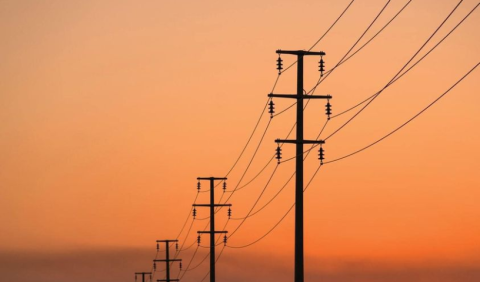
Are Rolling Blackouts Coming to Ohio?
Over the past few months, cooperative leaders engaged our elected leaders at the Statehouse level and in Washington D.C. to discuss our concerns over power reliability and the impact it will have on our communities.
You rely on the power we provide, 24/7, 365 days a year—our lives, and livelihoods, depend on it. For the first time since neighbors came together to form Midwest Electric in 1936, the reliability of power is at risk.
Buckeye Power, our generation and transmission provider, generates enough power for all 400,000 members of Ohio’s electric cooperatives, but we depend on the larger grid to balance supply and demand for electricity. Your cooperative works hard every day to ensure the local delivery system is reliable through planned maintenance programs and responsive service to local power outages.
It’s important you understand why power reliability is at risk.
- Demand for electricity is higher than ever, especially during extreme cold and hot weather, and with the growing electrification of our transportation network.
- The supply of reliable electricity is down due to the rapid retirement of coal and nuclear plants. A Wall Street Journal column in May called the latest Environmental Protection Agency (EPA) ruling “a death sentence for fossil-fuel power plants.” In 2009, Ohio had 21 coal plants, and by the end of 2023, just 4 will remain in operation. Intermittent sources such as wind and solar power have come online but haven’t filled the gap, and aren’t reliable 24/7, 365.
- Overreaching and unreasonable environmental regulations that result in unnecessarily high costs and provide only minimal environmental benefits. This is clear from the EPA’s ruling in May, which requires technologies that aren’t yet cost-effective or feasible (and may never be).
- Poorly designed electricity market rules that under-compensate reliable baseload power plants that provide steady, controllable output, while over-compensating less reliable, intermittent sources.
- Unreasonable goals and time frames to achieve greater reductions in carbon emissions from electricity providers, even though the U.S. electric sector has cut CO2 emissions by 36% since 2005 while producing nearly 5% more electricity.
- Supply chain challenges have resulted in unreasonable lead times on obtaining new transformers and line trucks we use for local service.
Organizations charged with ensuring a reliable electric grid (North American Electric Reliability Corporation) and (PJM Interconnection), which manages Ohio’s grid, have each published reports of concerning trends causing increased reliability risks. They point out rolling blackouts, like those experienced in Texas, California, nine Midwest states, and threatened in Ohio in December 2023, are inevitable without an immediate change in energy policy.
What can you do?
There are two ways to help us carry the message to our state and local elected leaders that you support common-sense energy policy.
- You can write to your elected leaders using our letter template.
- Join America's Electric Cooperatives PAC (formerly ACRE Co-op Owners for Political Action) to voice your support to lawmakers.
For 87 years, the mission of your cooperative has been to deliver reliable, safe, environmentally responsible electricity at stable and affordable rates, to the member-owners of the local communities we serve. Our commitment has never wavered but is being challenged because of poorly conceived and harmful energy policies.

